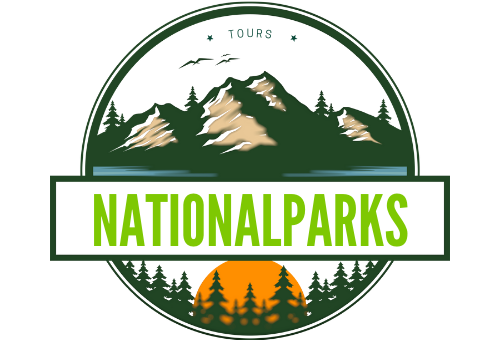Katmai National Park and Preserve, located in southwestern Alaska, is a vast wilderness area known for its unique geologic features, abundant wildlife, and rich cultural history. The park’s history is deeply tied to the Valley of Ten Thousand Smokes and the Novarupta Eruption of 1912, which had a profound impact on the region.
What is the Historical Significance of the Valley of Ten Thousand Smokes?

The Valley of Ten Thousand Smokes is a 40-square-mile, 100-to-700-foot-deep pyroclastic flow formed by the Novarupta Eruption. This valley was discovered in 1916 by Robert Fiske Griggs, a botanist who led an expedition to the area. The valley was found to contain a vast number of fumaroles, which subsided as the ash cooled over time. Today, only a few of these fumaroles remain active.
What was the Novarupta Eruption of 1912?

The Novarupta Eruption, which occurred on June 6, 1912, was one of the largest volcanic eruptions of the 20th century. It released 30 times the volume of magma of the 1980 Mount St. Helens eruption and darkened the sky for three days. The eruption was so powerful that it was heard in Atlanta and St. Louis, and the fumes were observed as far away as Denver, San Antonio, and Jamaica.
How did the Novarupta Eruption Impact Katmai National Park?
The Novarupta Eruption had a profound impact on Katmai National Park. The eruption converted a green valley into an ash-filled wasteland, and the Ukak River and its tributaries cut gorges into the ash that accumulated in the Valley of Ten Thousand Smokes. The summit of nearby volcanic Mount Katmai subsided and collapsed as magma beneath it drained away, resulting in a crater that filled with water and became a lake.
When was Katmai National Park and Preserve Established?
Katmai National Park and Preserve was established in 1980 under the Alaska National Interest Lands Conservation Act. The park’s area covers 4,093,077 acres, which is between the sizes of Connecticut and New Jersey. Most of the national park is a designated wilderness area.
How have the Ecosystem, Wildlife, and Visitor Access Changed in Katmai National Park?
- Ecosystem: The park’s unique geology and volcanic history have created a diverse ecosystem with lakes, wild rivers, mountains, forests, and marshlands. The park is home to a wide variety of wildlife, including grizzly bears, moose, wolves, caribou, foxes, wolverines, and numerous bird species.
- Wildlife: The park is particularly known for its large numbers of grizzly (Alaskan brown) bears. Visitors can watch bears feeding on sockeye salmon along the Brooks River during the summer. The park’s wildlife is supported by the abundant fish populations, including sockeye salmon, which are a crucial food source for the bears.
- Visitor Access: The park’s main visitor center is located at Brooks Camp on Naknek Lake, accessible by float planes. The scenic coastline, including fjords, cliffs, bays, and waterfalls, can be accessed by boat or float plane.
What are the Significant Events and Dates in Katmai National Park’s History?
| Year | Event |
|---|---|
| 1912 | The Novarupta Eruption occurs, forming the Valley of Ten Thousand Smokes. |
| 1916 | Robert Fiske Griggs discovers the Valley of Ten Thousand Smokes. |
| 1918 | Katmai National Monument is established by President Woodrow Wilson to protect the area around the Novarupta Eruption. |
| 1931 | The monument’s boundaries are expanded to the north by President Herbert Hoover. |
| 1942 | Franklin D. Roosevelt adds all islands within five miles of the Katmai coast to the monument area. |
| 1968 | President Lyndon B. Johnson signs boundary adjustments that include an additional 100,000 acres north and west. |
| 1978 | President Jimmy Carter expands Katmai by 1.37 million acres, primarily on the north side of the monument. |
| 1980 | Katmai National Park and Preserve is established under the Alaska National Interest Lands Conservation Act. |
